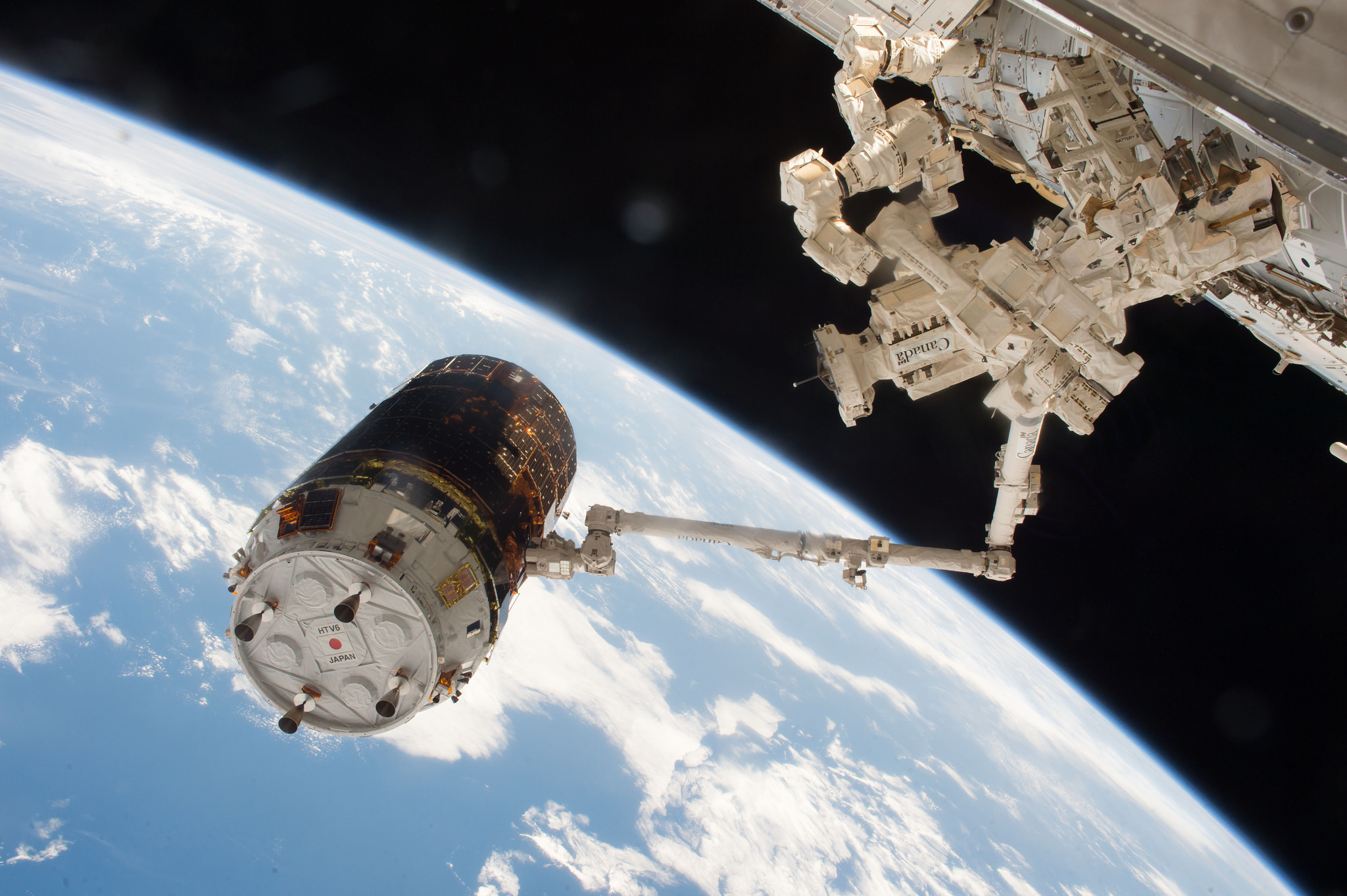
Six weeks after delivering more than 4.5 tons of supplies and experiments to the International Space Station, an unpiloted Japanese cargo spacecraft is scheduled to depart the station Friday, Jan. 27. Live coverage of the departure will begin at 10 a.m. EST on NASA Television and the agency’s website.
Ground controllers will use the station’s Canadarm2 robotic arm to unberth the Japan Aerospace Exploration Agency’s (JAXA’s) H-II Transport Vehicle-6 (HTV-6) several hours before its release. Space station Flight Engineer Thomas Pesquet of ESA (European Space Agency), with back-up support from Expedition 50 Commander Shane Kimbrough of NASA, will then command the station’s robotic arm to release HTV-6, loaded with station trash, at 10:30 a.m.
The cargo ship will move to a safe distance below and in front of the station for about a week’s worth of data gathering with a JAXA experiment designed to measure electromagnetic forces using a tether in low-Earth orbit. JAXA is scheduled to deorbit the craft around Feb. 5 and have it burn up harmlessly over the Pacific Ocean.
The HTV-6 launched from the Tanegashima Space Center in southern Japan on Dec. 9 and arrived at the station on Dec. 13. It delivered water, spare parts and experiment hardware to the six-person station crew, including six new lithium-ion batteries and adapter plates that replaced the nickel-hydrogen batteries previously used on the station to store electrical energy generated by the station’s solar arrays. These were installed through a blend of complex robotics and two spacewalks this month.
Check out the full NASA TV schedule and video streaming information at:
https://www.nasa.gov/nasatv
Keep up with the International Space Station, and its research and crews, at:
https://www.nasa.gov/station
Get breaking news, images and features from the station on Instagram and Twitter:
http://instagram.com/iss
and
http://www.twitter.com/Space_Station
-end-
Kathryn Hambleton
Headquarters, Washington
202-358-1100
kathryn.hambleton@nasa.gov
Dan Huot
Johnson Space Center, Houston
281-483-5111
daniel.g.huot@nasa.gov


























